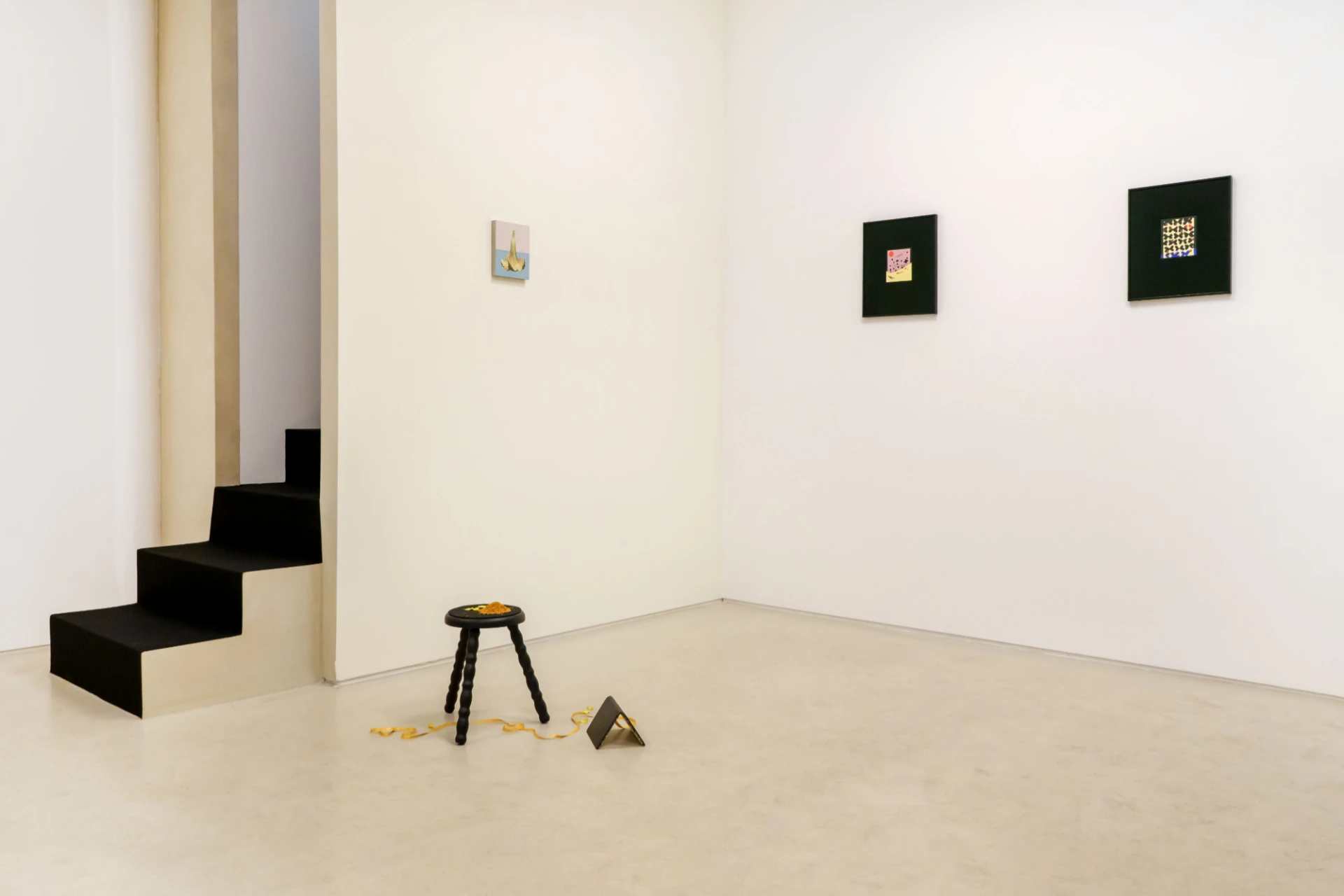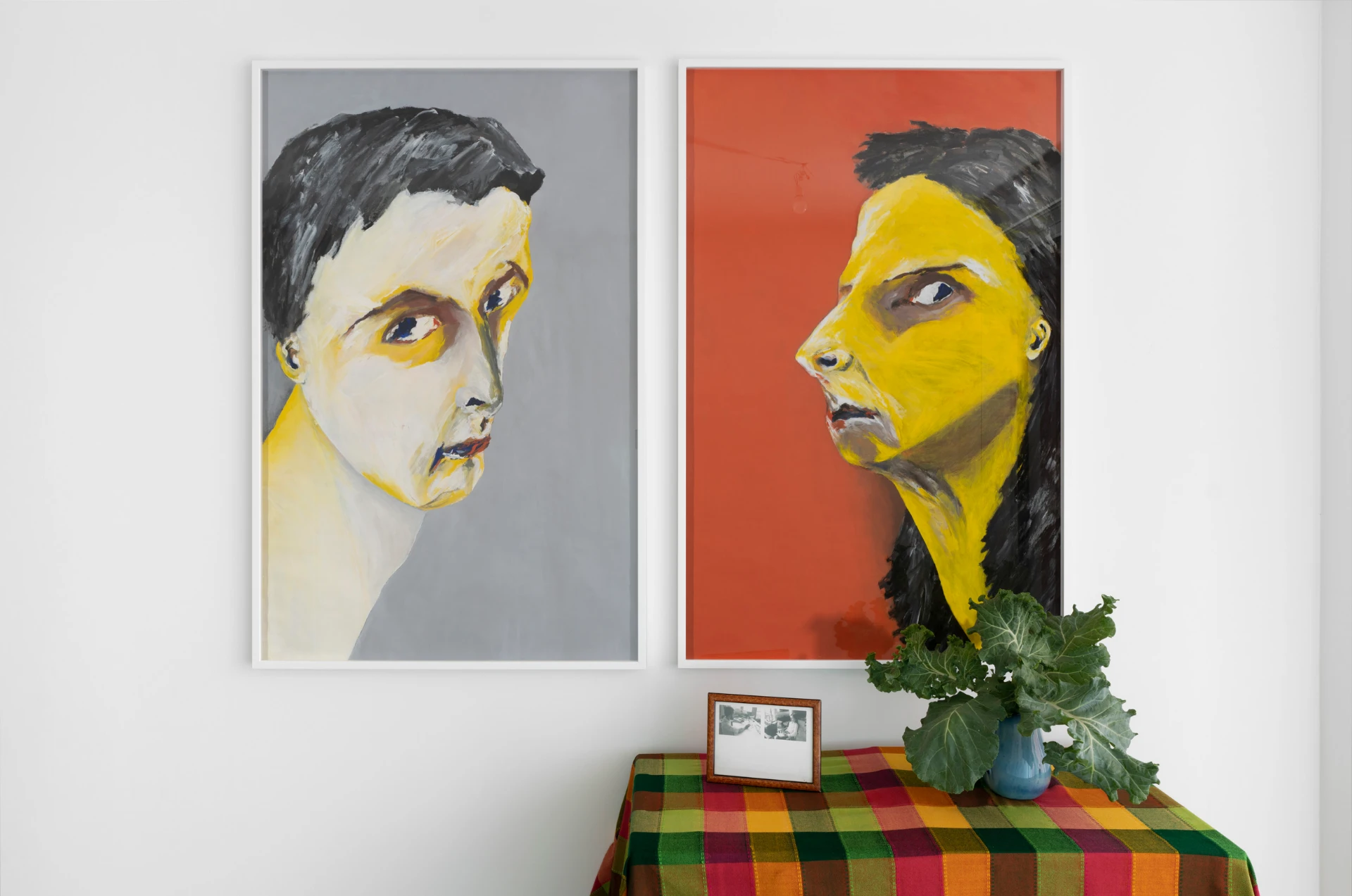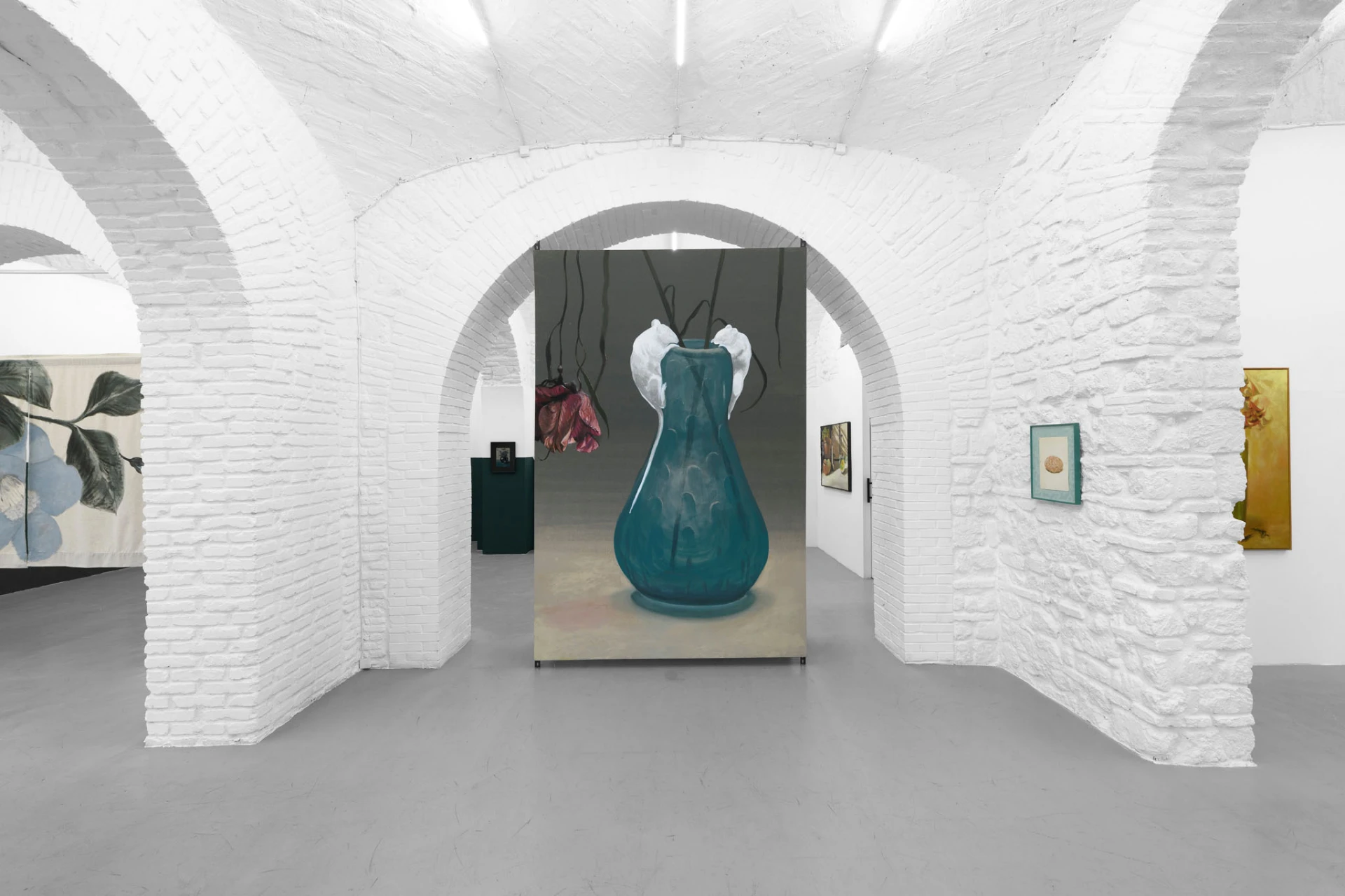article
Hidden Aegis: Thomas Braida in Rome
In the past, Thomas's works were often populated by humans, animals, and hybrids, pictorial constructions of mythological, religious, or classical inspiration, with lush treatments and narrative staging. Now, still glimpsing literature and tradition, human agitation has vanished, blessedly!, flora and fauna are serene.
If the shutters are open and entry is permitted into the gallery, prudence is observed from the first moment. A huge vase, inspected by restless spectral rodents, blocks the passage through one of the arcades of Monitor, in the San Lorenzo neighborhood. To the left, a sparrow hangs from a camellia, a circumspect image of an illegible present and hidden spirit; on a noren, more than creating separation or conditioning, the intent seems to be to protect. From what?
In Thomas Braida's exhibition, Taccioni i Fiori, there is a secret that is not diligently concealed from visitors, but rather quietly kept secret. The concerns are different; we are neither welcome nor unwelcome, but rather tolerated, because our commitment is directed toward important tasks. A panther passes by us, flowers on its back, oblivious. A silent tremor hovers, gently walling off the carnal splendor. The lightest breeze of patience and affection makes the camellia and the bird sway, and soon everything is steadfast in diaphanous devotion to the building it anchors.
Not so much a secret, an omission. Without hostility, however, reserve, the preservation of sweet harmony is made of silences.
Beyond the gallery walls, in this proletarian parish of Rome, one breathes community and resistance. A mirror, and yet, here, the kindly efforts are preserved. Each work bears the same absorbed zeal to remove any stain of the civilizing flock from the common ground. In the past, Thomas's works were often populated by humans, animals, and hybrids, pictorial constructions of mythological, religious, or classical inspiration, with lush treatments and narrative staging. Now, still glimpsing literature and tradition, human agitation has vanished, blessedly!, flora and fauna are serene. The absence is made of traces, one senses that people have passed through here, but the "who?" that instinctively appears with the mask, or the vase vanishes when one understands that there are no gaps, everything is present. A profound struggle passes beneath the stage. Covert flows of solidarity and sap nourish the system, and a new order finds balance.
Still, nonexistence bothers us; it's us. Despite the reality, in this world there's nothing to fear, there's no extinction. Disappearance, more than a raid, feels like abandonment—corporeal after ethical. Are we witnesses to the results of the extreme moral apathy that has befallen the group? This is what the careful remodeling we see emerging in the paintings and objects points to: here, some incipient organic alchemy, there, healing and strengthening in the face of renunciation, beyond, an adventure guided by animated, self-generating stars, so many meditations nestled in the retreat from the insidious lot. Mea culpa, after all. And if magic overflows the canvas in the frames, the benefits are internal and closed. A place of dehumanization as a remedy where disinterest and distance are champions. Giving up was a gift.
The shame belongs to others; here, sincerity and ease reign in each relic whose motto has transformed from greed to friendship. There is a pride and confidence, surely unforeseen, in the certainty that the moorings have not broken, but have dematerialized. The blush shines, a delight that will never be savored. A preamble on paper that at first deceived us amidst the colossal scenes dictates the elementary: the solidity and brilliance of the hive, grounded in the collective, makes room for each person's design and dream. Through cultural remains, the tiniest and most mysterious creature seeks the light, goes within. If the celestial lighthouse seduces us equally, we are doomed to drift away.
Tacciono i Fiori, by Thomas Braida, is open until July 25 at Monitor Rome.
BIOGRAPHY
Diogo ES Dietl, who holds a degree in History from Universidade Nova de Lisboa, has been following contemporary artistic creation since 2012, occasionally working on its edges through writing, consulting, promotion, production, and co-curating.
ADVERTISING
Previous
article
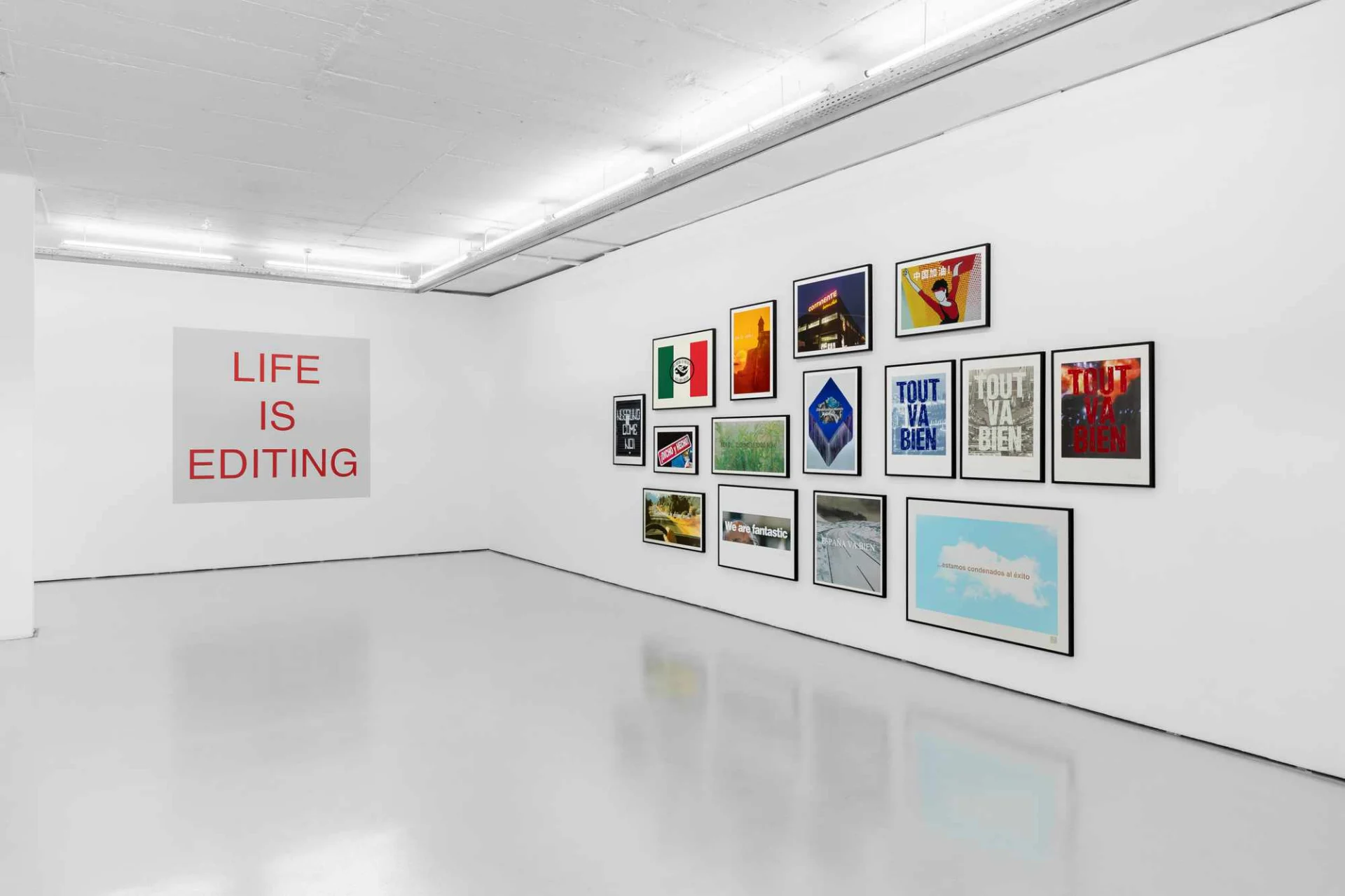
14 Jul 2025
Life and other forms
By Filipa da Rocha Nunes
Next
article
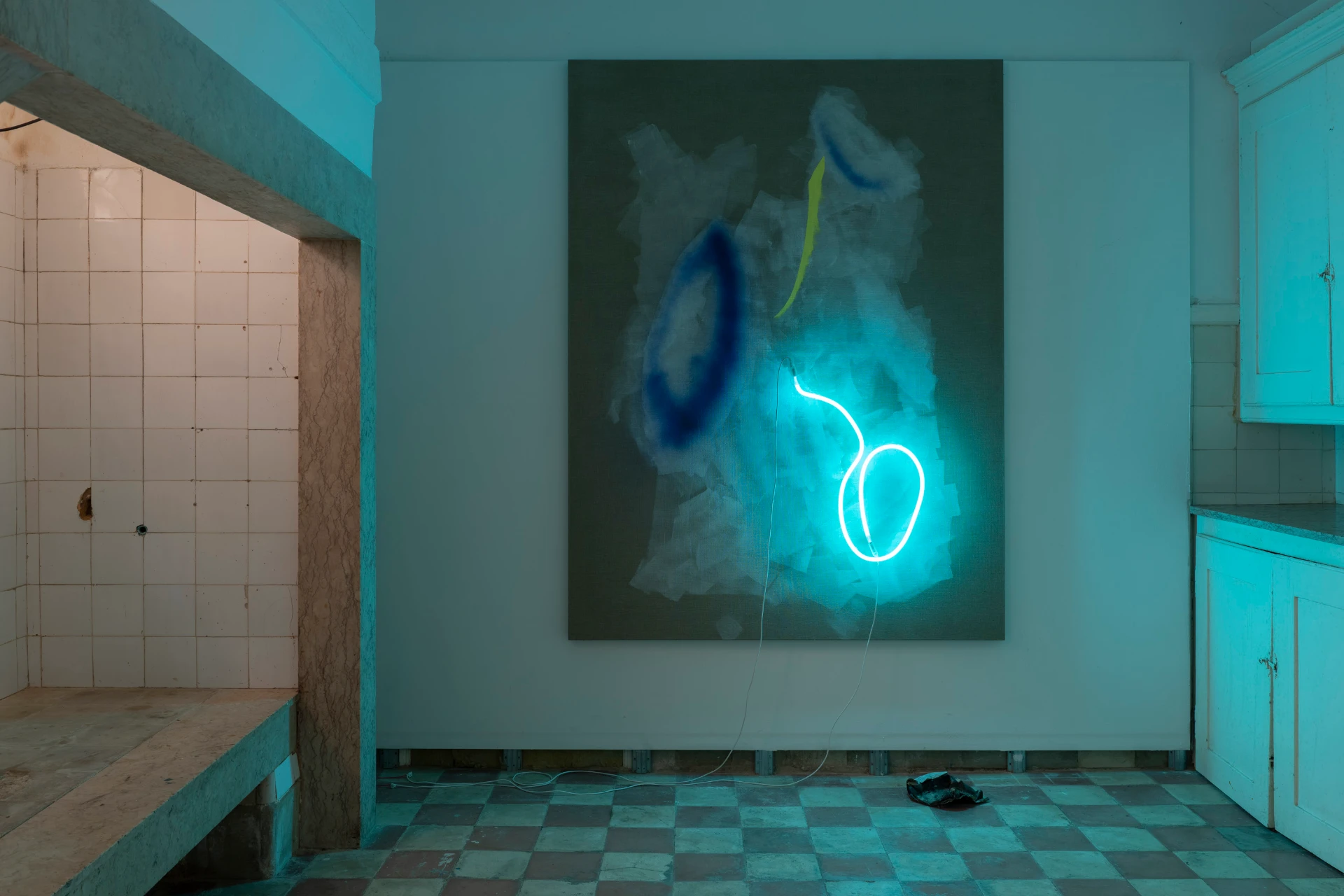
15 Jul 2025
In the Mouth of a Flowering Ghost at Figura Avulsa
By Katya Savchenko
Related Posts
